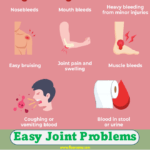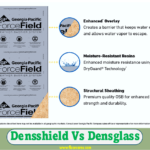Tub To Floor Transition: Tub to floor transition solutions, like transition strips and silicone waterproof barriers, provide a seamless and water-tight connection between the bathtub and floor. Proper installation is crucial to prevent water damage and ensure a long-lasting finish.
Consider the type of flooring and bathtub materials to select the most suitable transition solution. Additionally, it’s essential to fill any gaps with backer rod and caulk to create a watertight seal and protect against moisture damage. When installing flooring around the bathtub, ensure proper measurements and secure trim to create a clean and finished appearance.
It is also important to consider the timing and sequence of installing the bathtub and flooring to avoid damaging the floor. By following these steps, you can achieve a professional and durable tub-to-floor transition.

The Importance Of A Seamless Tub To Floor Transition
When remodeling or designing a bathroom, the tub to floor transition is often an overlooked detail, yet it holds significant importance in both functionality and aesthetic appeal. Achieving a seamless transition between the tub and the floor not only enhances the visual appeal of the bathroom but also plays a crucial role in preventing water damage and ensuring durability.
Importance Of Proper Tub To Floor Transition
A proper tub-to-floor transition is essential for maintaining the structural integrity of the bathroom. By seamlessly connecting the tub and the floor, it helps prevent water seepage, mold growth, and damage to the underlying structure. Additionally, an appropriate transition ensures a smooth and coherent appearance, adding to the bathroom’s overall aesthetic appeal.
Impact Of Improper Transition On Bathroom Aesthetic
Improper tub-to-floor transitions can detract from the bathroom’s visual appeal, creating an unattractive and disjointed appearance. Gaps or uneven transitions can disrupt the space’s flow, making it appear unfinished and unprofessional. Moreover, inadequate transitions may lead to grime buildup, making cleaning more challenging and compromising the bathroom’s overall cleanliness.

Choosing The Right Transition Materials
For a seamless Tub-to-Floor transition, consider using quality materials like a Collapsible Shower Threshold Water Dam or Flexible Quarter-Round Molding. These options provide durable water barriers to protect your bathroom while ensuring a polished finish near the bathtub.
Types Of Transition Strips
Transition strips are available in various materials, including metal, wood, vinyl, and rubber. Each type offers unique characteristics suitable for different applications.
Considerations For Selecting Transition Material
When choosing a transition material, consider factors such as durability, water resistance, aesthetic appeal, and ease of installation. The material should seamlessly bridge the gap between the tub and the floor while enhancing the overall look of the space.
Preparing The Tub And Floor For Transition
To ensure a smooth transition from the tub to the floor, it is important to properly prepare the area. This can be done by installing a transition strip, filling any gaps between the tub and floor with a backer rod, and caulking with a waterproof sealant.
These steps will help prevent water damage and ensure a professional finish.
Necessary Pre-installation Steps
Before you start the tub to floor transition, there are a few important pre-installation steps you need to take. These steps will ensure a smooth and successful installation process. Here’s what you need to do:
- Measure and prepare all necessary materials
- Clear the area and remove any existing flooring
- Clean and prepare the tub and floor surfaces
- Acclimate the transition strip to the room’s humidity and temperature
- Gather the necessary tools for installation
Now that you have a general idea of the pre-installation steps, let’s examine the surface preparation and cleaning process in more detail.
Surface Preparation And Cleaning
Surface preparation and cleaning are crucial steps to ensure a strong and durable tub-to-floor transition. Here’s how you can prepare the surfaces:
- Thoroughly clean the tub and floor surfaces with a non-abrasive cleaner to remove any dirt, grime, or existing caulk.
- Use a scraper or putty knife to remove any old caulking or adhesive residue.
- If there are any gaps or uneven areas, fill them with a suitable filler and allow it to dry completely.
- Ensure that both the tub and floor surfaces are dry and free of moisture before proceeding with the installation.
Once the surfaces are clean and dry, it’s time to start the installation process. Make sure to follow the manufacturer’s instructions and use the appropriate tools for a secure and seamless tub-to-floor transition. Remember, proper preparation is the key to a successful tub-to-floor transition. By following these necessary pre-installation steps and ensuring surface preparation and cleaning, you’ll be on your way to achieving a professional and visually appealing transition.
Installing The Transition Strip
Install the transition strip between the tub and floor to ensure a seamless and waterproof connection. Prevent water damage and create a clean finish by following the proper installation techniques for this tub-to-floor transition.
Step-by-step Guide To Installing Transition Strip
Installing the transition strip between your tub and floor is an essential step in achieving a seamless and professional-looking finish. Follow this step-by-step guide to ensure a successful installation:
Step 1: Measure And Cut The Transition Strip
Start by measuring the distance between the tub and the floor to determine the length of the transition strip. Use a suitable tool to cut the strip to the appropriate length, making sure to account for any necessary adjustments or overlaps.
Step 2: Prepare The Surface
Before installing the transition strip, ensure that both the tub and floor surfaces are clean and dry. Remove any debris or dirt that may hinder the adhesion of the strip. Additionally, check for any protruding nails or screws and address them accordingly.
Step 3: Apply Adhesive
Apply a suitable adhesive to the back of the transition strip. Ensure you use an adhesive specifically designed for this purpose, as it will provide optimum adhesion and durability. Follow the manufacturer’s instructions for applying the adhesive, making sure to apply it evenly and consistently.
Step 4: Position And Press The Strip
Align the transition strip with the edge of the tub and the floor. Gently press it into place, ensuring that it adheres firmly and evenly. Use a roller or a flat object to apply pressure and secure the strip, ensuring proper bonding between the strip and the surfaces.
Step 5: Allow The Adhesive To Dry
Give the adhesive sufficient time to dry and cure before subjecting the transition strip to any stress or foot traffic. Follow the manufacturer’s guidelines for drying time, as it may vary depending on the specific adhesive used. Avoid stepping on or disturbing the strip until the adhesive is fully dry.
Step 6: Clean And Finish
Once the adhesive is dry and the strip is securely in place, clean any excess adhesive or debris from the strip and the surrounding area. Use a suitable cleaning solution or a damp cloth to ensure a neat and polished finish.
Following these simple steps, you can easily install the transition strip between your tub and floor, achieving a seamless and aesthetically pleasing transition. Proper installation not only enhances the overall look of your bathroom but also ensures durability and longevity.
Addressing Common Challenges And Concerns
The transition from a tub to a floor presents various challenges and concerns that need to be carefully addressed for a seamless and functional outcome. Let’s delve into some common issues that arise in this process and effective solutions to tackle them.
Dealing With Gaps And Uneven Surfaces
- Use a backer rod to fill gaps between the bathtub and the floor.
- Cut and manipulate the backer rod to fit snugly.
- Securely seal the gap with a suitable caulk for a clean finish.
Ensuring Waterproof And Moisture Protection
- Install a waterproof barrier like a collapsible shower threshold water dam.
- Apply self-adhesive silicone waterproof strips for added protection.
- Utilize rubber strips to prevent water damage and ensure a flat fit.
Properly addressing these challenges will enhance the aesthetics of your bathroom and contribute to the longevity and functionality of the tub-to-floor transition. By implementing these solutions, you can achieve a seamless and watertight connection between the tub and floor, creating a secure and visually appealing space in your home.
Maintaining And Repairing Tub Floor Transitions
Ensuring the proper maintenance and swift repair of the tub-to-floor transition in your bathroom is essential to prevent water damage and maintain the aesthetic appeal of the space. Regular maintenance practices and prompt repair of damaged or worn transitions can significantly extend the lifespan of your bathroom flooring and prevent costly water-related issues. Let’s delve into some effective maintenance tips and repair methods for tub-to-floor transitions.
Regular Maintenance Practices
Regular maintenance plays a pivotal role in preserving the integrity of the tub-to-floor transition. Implementing the following practices can help keep your transitions in excellent condition:
- Inspecting for Wear: Regularly check the transition areas for signs of wear, such as cracking, chipping, or separation.
- Cleaning: Keep the transitions clean and free from debris, ensuring that the area is dry after cleaning to prevent moisture-related issues.
- Sealing: Periodically examine the sealant in the transition areas to ensure it is intact, and reapply the sealant if any signs of deterioration are observed.
- Décor Enhancement: Clean and polish the transitions to maintain their visual appeal and extend their lifespan.
Repairing Damaged Or Worn Transitions
When faced with damaged or worn tub-to-floor transitions, timely repairs are crucial in preventing further deterioration and water-related issues. Consider the following methods for repairing damaged transitions:
- Caulking: Fix minor cracks or separations in the transitions by recaulking the affected areas with a quality waterproof caulk.
- Replacing Trim: In cases of severe wear or damage, replacing the trim or transition strips may be necessary to ensure a secure and visually appealing transition.
- Waterproofing: Implement waterproofing techniques in the transition areas to prevent water seepage and subsequent damage to the flooring materials.
Frequently Asked Questions On Tub To Floor Transition
How Do You Fill A Gap Between A Bathtub And Floor?
Use the backer rod to fill the gap between a bathtub and the floor. It’s designed to fill larger gaps than standard caulk. Cut and manipulate it into place easily.
What Do You Put Between Tub And Vinyl Flooring?
To ensure a smooth and waterproof transition between the tub and vinyl flooring, use silicone caulk or a flexible transition strip. Applying a bead of silicone caulk or installing a transition strip helps maintain a seamless and watertight connection.
Should You Put Flooring Under Bathtub?
To avoid potential damage, it’s best not to put flooring under the bathtub. For convenience, install the bathtub first, then flooring and walling.
Will My Floor Support A Bathtub?
Most likely, yes. Standard bathroom floors are designed to support a bathtub’s weight. Consider reinforcing if using a larger tub.
What Is The Best Way To Transition the Tub To the Floor?
For a smooth transition, use flexible quarter-round molding near the tub area.
How Do I Prevent Water Damage Near My Bathtub?
Install a collapsible shower threshold water dam for waterproofing.
Conclusion
Ensuring a seamless tub-to-floor transition is crucial for both functionality and aesthetics. With the right tools and techniques, you can prevent water damage and create a polished look for your bathroom space. Explore the various options available to find the perfect solution for your needs.


